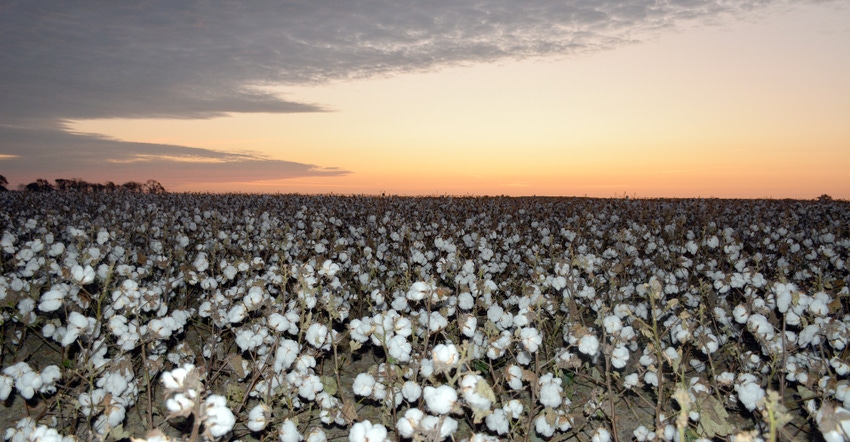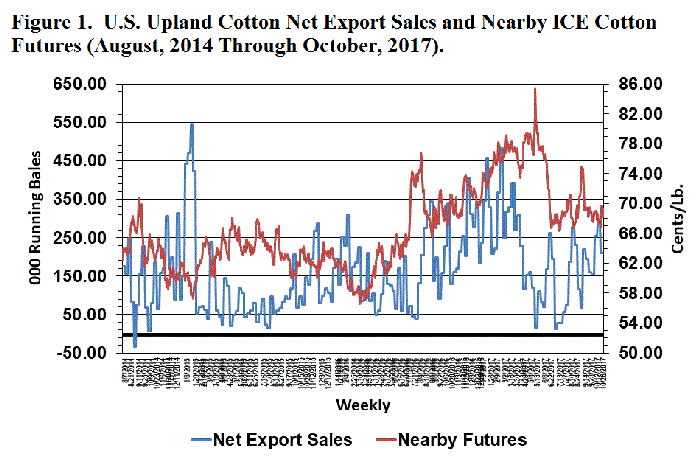
Earlier this year, I wrote a column about the notable expansion in export demand for U.S. cotton. In Figure 1, this increase is reflected by the upward trend of weekly U.S. export sales and U.S. prices between June 2016 and June 2017.
Along the trend line, the expected economic relationship existed, with higher (or lower) prices corresponding to lower (or higher) quantities bought by foreign buyers. But the upward trend was unusual. It probably happened because the widespread, exceptional quality of the 2016 crop brought foreign buyers to the U.S. first — and kept them.
It now appears that U.S. cotton export demand is back to normal. Weekly variations in price are still associated with weekly export sales that vary in the opposite direction. But the overall trend line has flattened back out since June 2017.
There are still some beneficial implications for the current demand pattern. To review, the red line in Figure 1 shows the daily nearby ICE cotton futures settlement price, in cents per pound. The blue plateaus reflect weekly net export sales, in thousands of running bales. The graph shows the expected demand response to fluctuating prices. In general, as U.S. prices rise, export sales drop off. As U.S. cotton becomes cheaper, more of it is sold.

CONTINUED NARROW RANGE
This is all happening within a narrow range of prices. Since late August 2017, when futures dipped below 68 cents, there has been a bump in cotton bales demanded for export. This suggests near term fundamental futures price support around 67 cents.
The flip side of that is that when prices rise above 69 cents, the quantity demanded drops off. There would probably continue to be a lot of hedge selling at this level, too. All of this implies a continued, narrow equilibrium range in the upper 60s.
There are a number of things that could bring about a change to this pattern. If the U.S. has smaller supplies of quality cotton, relative to competitors like Brazil and Australia, that could influence mill buyers to do their shopping outside the U.S. We might have to see lower U.S. prices to make us competitive in that scenario.
We would begin to see that in Figure 1 with a downtrend or downshift in the equilibrium range of nearby futures and export sales.
The demand picture could also vary with major shifts in economic growth or policy. For example, the continuation of strong economic growth around the world might lead to an expansion of cotton consumption. Policy changes could also provide surprises on the demand side. An example would be if China begins importing a lot more cotton in 2018 to replenish government reserves, over and above their normal mill use needs.
For additional thoughts on these and other cotton marketing topics, please visit my weekly on-line newsletter at http://agrilife.org/cottonmarketing/.
About the Author(s)
You May Also Like




